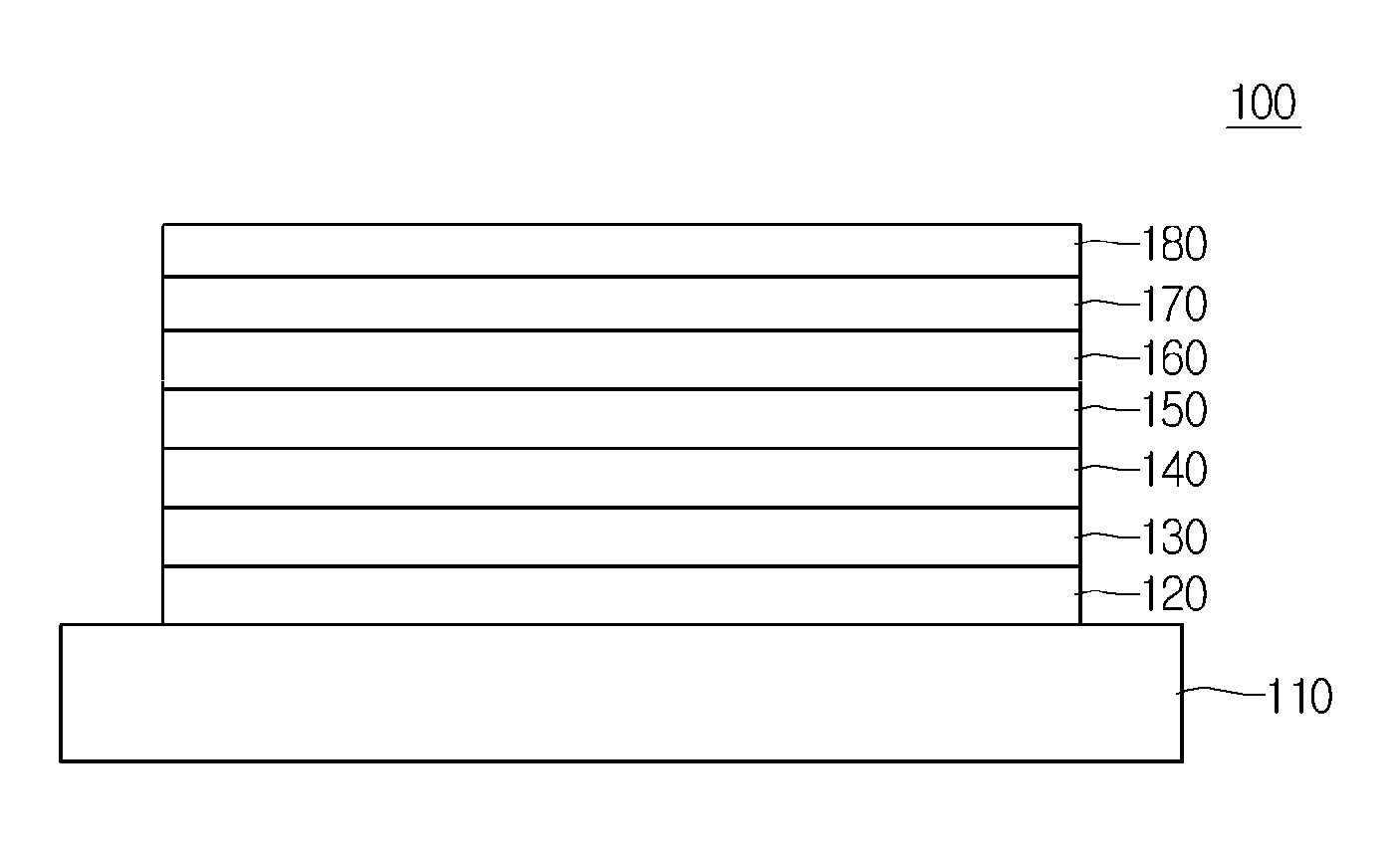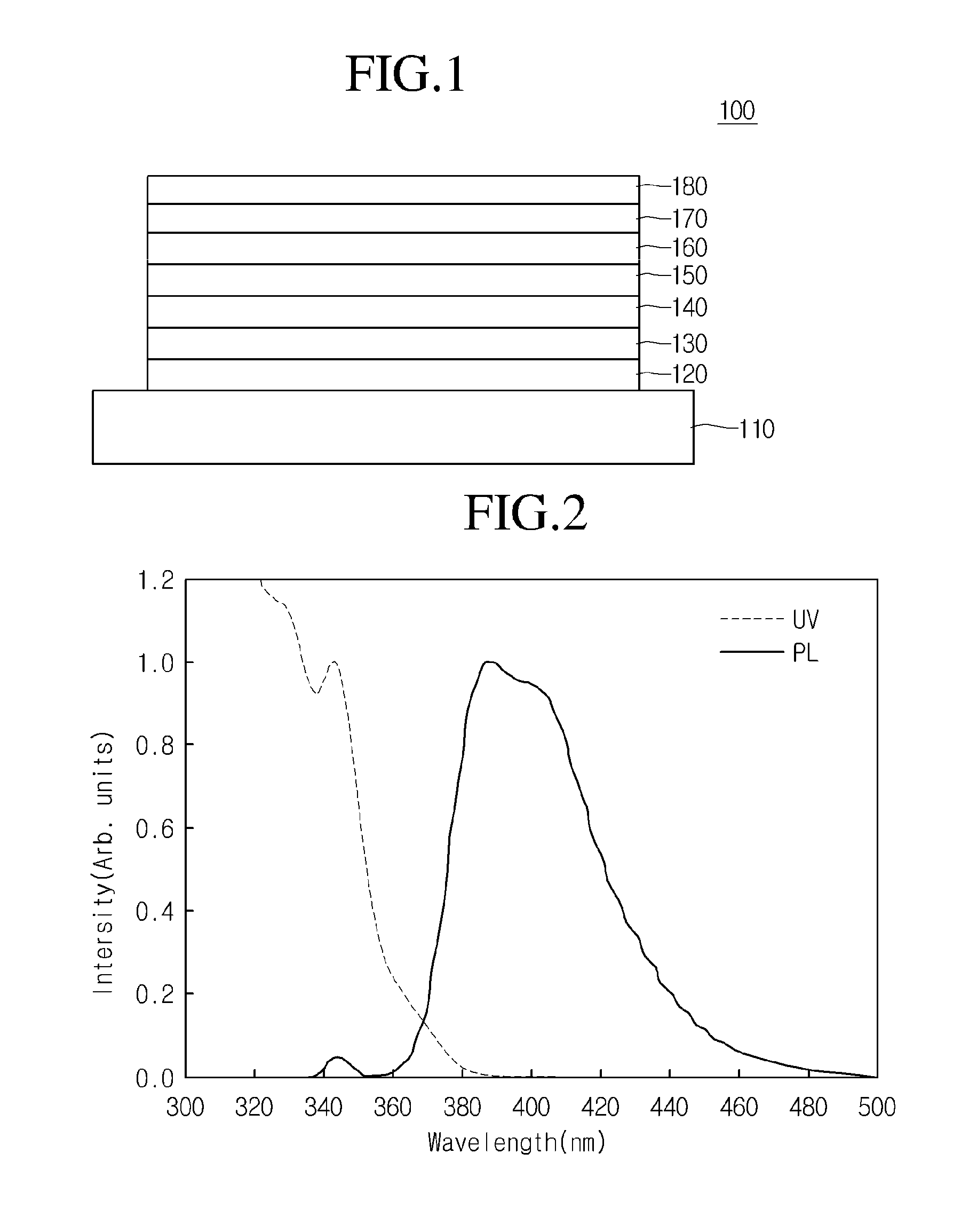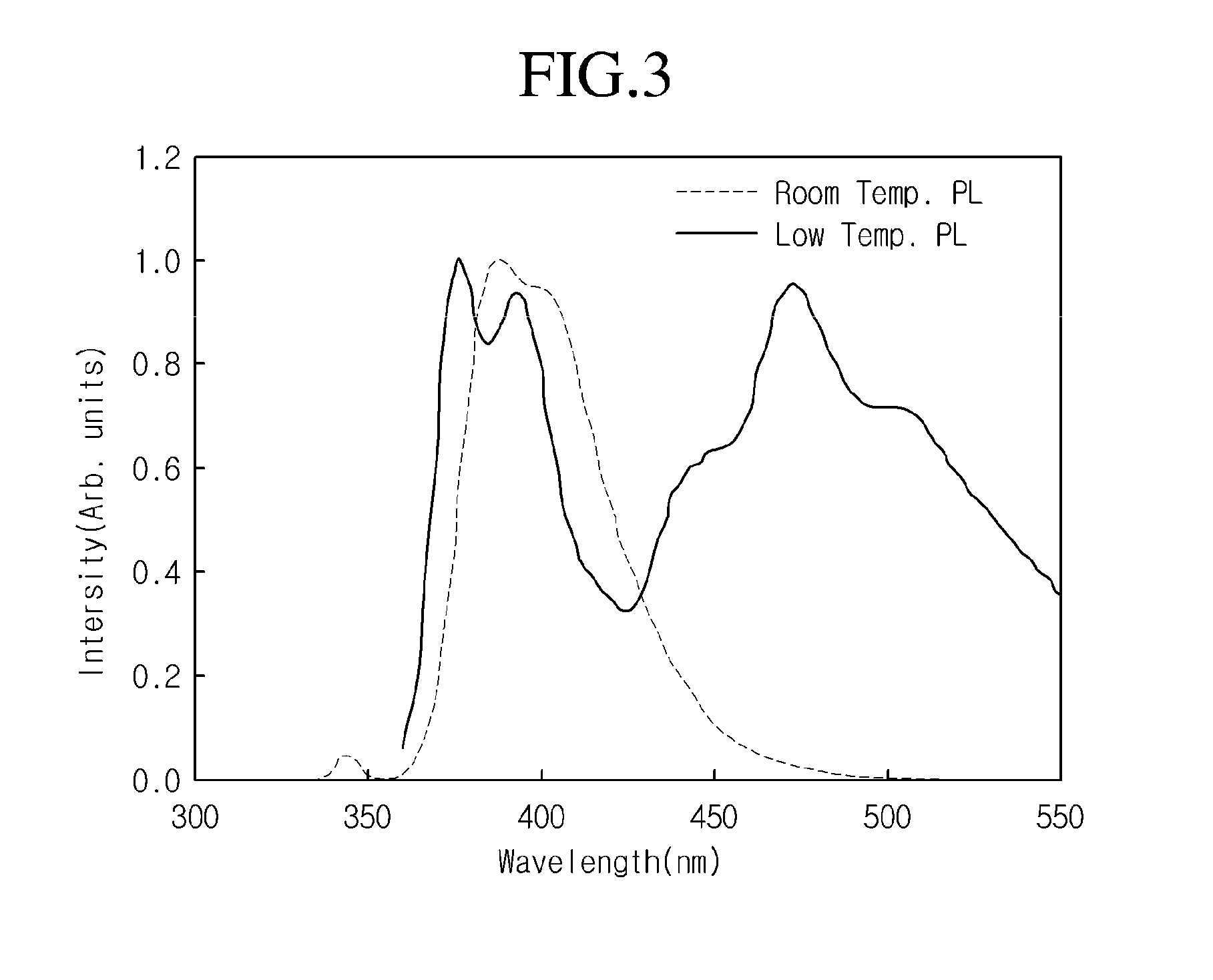Host material and organic light emitting display device using the same
a technology of host material and display device, which is applied in the direction of thermoelectric devices, organic chemistry, chemistry apparatus and processes, etc., can solve the problems that the quantum efficiency of the host material cannot be enhanced without limit, and the quantum efficiency of the host material cannot be maximized, so as to enhance the luminous efficiency and the life span
- Summary
- Abstract
- Description
- Claims
- Application Information
AI Technical Summary
Benefits of technology
Problems solved by technology
Method used
Image
Examples
experimental example 1
Synthesis of indolo(3,2-b)carbazole
[0066]Under a nitrogen gas stream, about 250.69 g (i.e., about 205.8 mmol) of 3,3′-methylenediindole and about 30.55 g (i.e., about 206.1 mmol) of triethyl orthofomate are dissolved and mixed in methanol within a 3-neck flask. Thereafter, about 5.0 g (i.e., 51.5 mmol) of enriched sulfuric acid is slowly added little by little into the 3-neck flask and then the mixture within the 3-neck flask is refluxed during a single hour. The mixture within the 3-neck flask is frozen to be a normal temperature. Subsequently, about 33 g of indolo(3,2-b)carbazole corresponding to a compound of dark brown is obtained by filtering the frozen mixture.
[0067]The mechanism for the synthesis of indolo(3,2-b)carbazole can be represented by the following reaction equation 1.
experimental example 2
Synthesis of Host Material (PBH1)
[0068]About 2.0 g (corresponding to 7.8 mmol) of indolo(3,2-b)carbazole synthesized through the experimental example 1 is dissolved in about 100 ml of tetrahydrofuran THF within a 2-neck flask. Also, 17.20 mmol of 2.5M n-butyllithium (n-BuLi) is slowly added little by little into the solution in which indolo(3,2-b)carbazole is dissolved. Subsequently, the solution within the 2-neck flask is stirred during two hours before about 15.75 g (corresponding to 19.5 mmol) of triphenylchlorosilane is slowly added little by little into the tetrahydrofuran THF provided the dissolved reaction material at a temperature of 78° C. Then, the tetrahydrofuran THF in which the reaction materials are dissolved is stirred during six hours. A re-crystallization process using water and dichloromethane and a filtering process are sequentially performed for the tetrahydrofuran THF provided with the reaction materials, in order to obtain about 3.8 g of a new host material cor...
PUM
 Login to View More
Login to View More Abstract
Description
Claims
Application Information
 Login to View More
Login to View More - R&D
- Intellectual Property
- Life Sciences
- Materials
- Tech Scout
- Unparalleled Data Quality
- Higher Quality Content
- 60% Fewer Hallucinations
Browse by: Latest US Patents, China's latest patents, Technical Efficacy Thesaurus, Application Domain, Technology Topic, Popular Technical Reports.
© 2025 PatSnap. All rights reserved.Legal|Privacy policy|Modern Slavery Act Transparency Statement|Sitemap|About US| Contact US: help@patsnap.com



